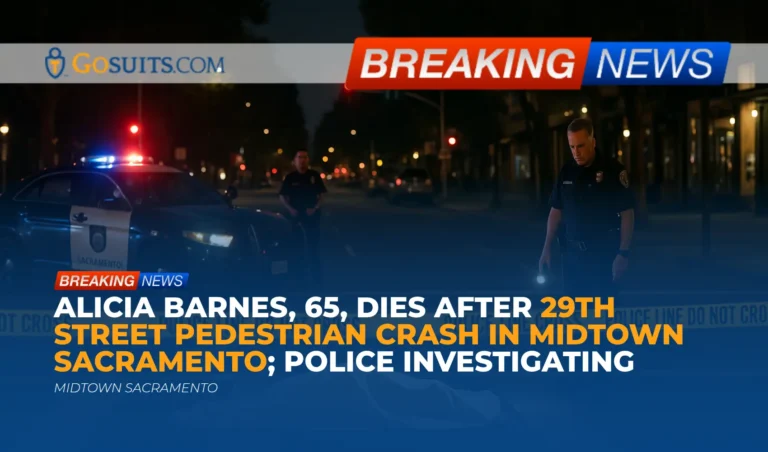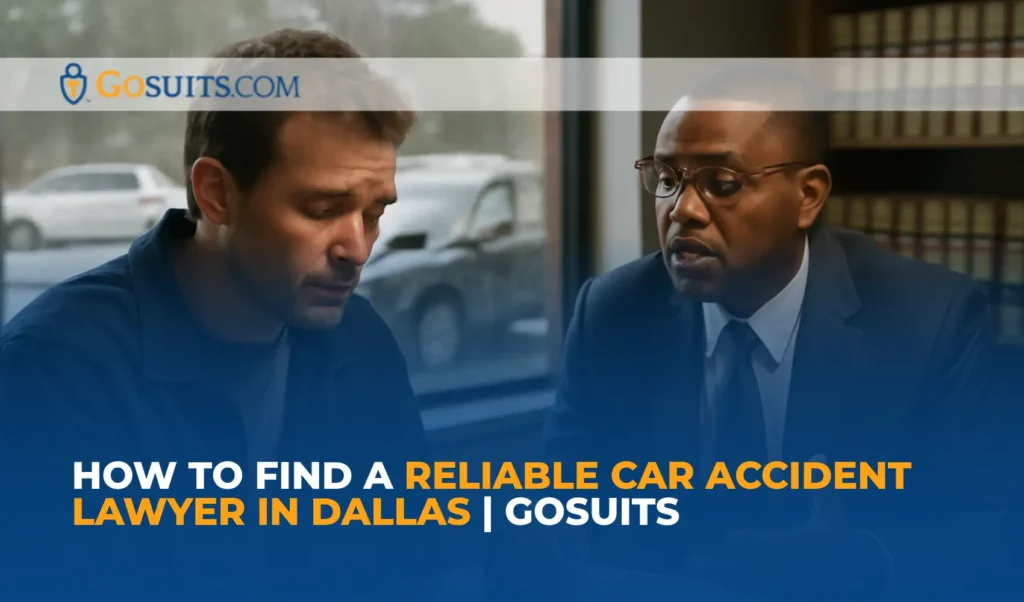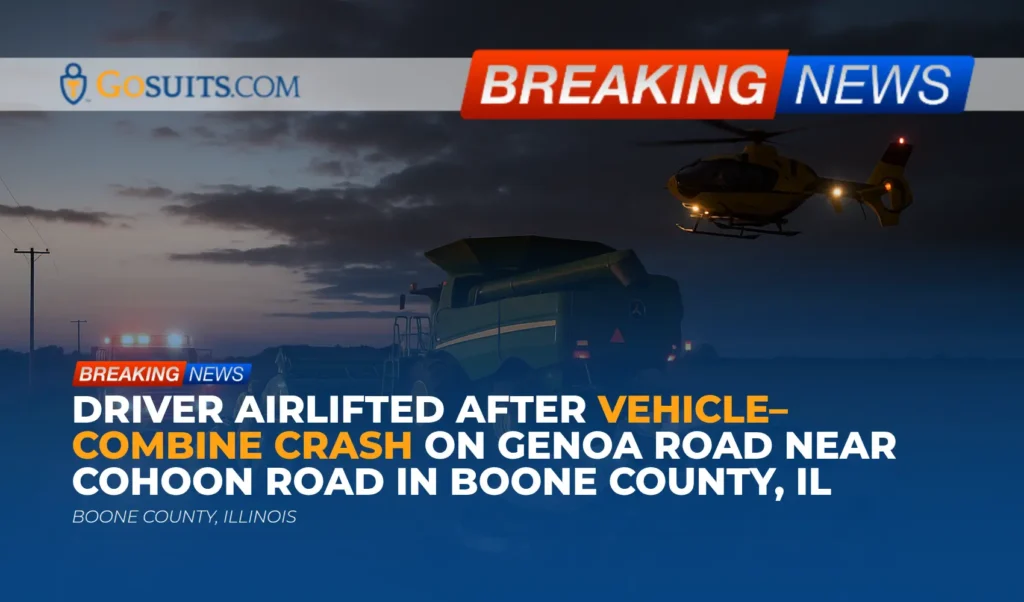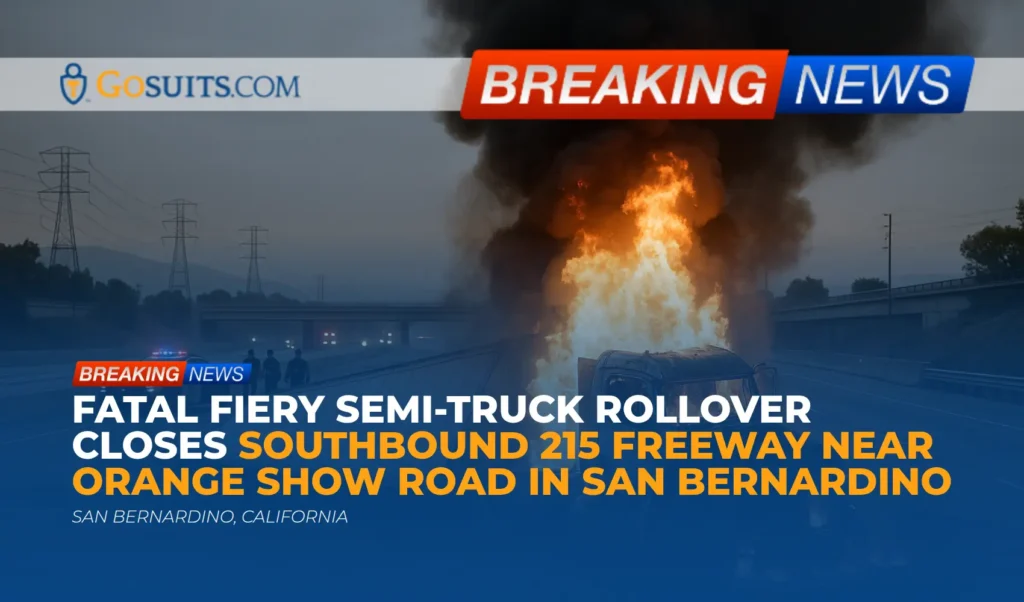- What we know about the midtown Sacramento pedestrian crash
- Location and timing
- What officials have said so far
- Why pedestrian crashes are so severe in evening hours
- California rules that shape civil liability in pedestrian crashes
- Key liability questions investigators may examine
- Evidence that often matters in a pedestrian fatality case
- Where families can obtain key records and information
- Insurance and compensation pathways after a fatal pedestrian crash
- Wrongful death and survival actions in California
- Community safety and roadway design considerations
- Practical next steps in the days ahead
- Commentary from Gosuits Sacramento, California Personal Injury Attorney
- Time-sensitive actions and why they matter
- Sources
What we know about the midtown Sacramento pedestrian crash
A 65-year-old woman, identified by the Sacramento County Coroner as Alicia Barnes of Roseville, was struck by a vehicle in midtown Sacramento and later died at a nearby hospital. The collision occurred Thursday evening along 29th Street, and the Sacramento Police Department reported that the pedestrian was transported with serious injuries and subsequently passed away. This is a profoundly difficult moment for family, friends, and the broader community. Our thoughts are with everyone affected by this tragedy.
At this time, publicly shared information confirms the location, time, and that police are investigating. There is no confirmation about contributing factors, fault, or whether any citations were issued. It is common in serious collisions for agencies to conduct thorough scene analysis and evidence review before releasing additional details.
Location and timing
The incident happened around 6:30 p.m. along 29th Street in midtown Sacramento. Evening hours can be especially challenging for visibility due to dusk and nighttime conditions. While the specific lighting and roadway conditions at the scene have not been publicly detailed, the time of day may be an element investigators consider when reconstructing events.
What officials have said so far
According to the Sacramento Police Department, the pedestrian suffered serious injuries and was transported to a hospital where she later died. The Sacramento County Coroner’s Office identified the decedent. Additional investigative findings, such as collision diagrams, statements, and evidence analysis, typically take time to compile. Those details, when released, often appear in the police collision report and related investigative materials.
Why pedestrian crashes are so severe in evening hours
Pedestrian collisions are among the most devastating roadway events. National and state safety agencies note consistent patterns that can inform community prevention efforts.
- Nighttime risk: National safety data indicate a substantial proportion of fatal pedestrian crashes occur in dark conditions. Public health resources emphasize that many deaths occur at night and in urban areas, where traffic volumes and speeds can compound risks. See the Centers for Disease Control and Prevention’s pedestrian safety overview for context on time-of-day patterns and urban settings.
- Urban corridors: California’s Office of Traffic Safety also highlights persistent fatality and injury concerns for pedestrians statewide, with urban corridors seeing a significant share of incidents each year.
- Speed and injury severity: Even modest increases in vehicle speed significantly raise the risk of severe injury or death to a pedestrian. California’s basic speed law requires drivers to travel at a speed that is reasonable and prudent for conditions, which includes visibility and traffic.
These are general patterns and do not imply any cause in this specific collision. Each crash requires a careful, fact-specific investigation.
California rules that shape civil liability in pedestrian crashes
California law sets out duties for both drivers and pedestrians, and these rules often guide the analysis of civil liability in a crash.
- Duty to yield at crosswalks: Drivers must yield the right-of-way to pedestrians crossing within any marked crosswalk or unmarked crosswalk at an intersection. The statute also clarifies that pedestrians should not suddenly leave a curb into the path of a vehicle that is close enough to constitute an immediate hazard, and that drivers must exercise all due care to avoid collisions with pedestrians. See California Vehicle Code section 21950.
- Crossing outside a crosswalk: Pedestrians crossing outside a crosswalk must yield the right-of-way to vehicles that are close enough to be an immediate hazard, though drivers still must use due care. See California Vehicle Code section 21954.
- Reasonable and prudent speed: Drivers may not drive faster than is reasonable and prudent having due regard for weather, visibility, traffic, and the surface and width of the highway. See California Vehicle Code section 22350.
These statutes help frame whether a driver, pedestrian, or in some cases a governmental entity (for roadway conditions) may bear responsibility. California’s comparative fault system can apportion responsibility between parties based on the facts developed in the investigation.
Key liability questions investigators may examine
Without speculating about this specific incident, experienced investigators and reconstructionists typically review questions like the following in pedestrian fatality cases:
- Crosswalk and signalization: Was the pedestrian within a marked or unmarked crosswalk? What did the pedestrian signal, if any, display? Were traffic signals and pedestrian signals operating correctly?
- Lighting and visibility: What were ambient lighting conditions? Were streetlights functioning? Were there visual obstructions, glare, or sight-line issues?
- Vehicle speed and braking: Was the driver traveling at a reasonable and prudent speed for the conditions? Are there skid marks, event data recorder (EDR) downloads, or braking evidence?
- Driver attention: Were there distractions such as mobile devices or in-vehicle systems? Are there phone records or infotainment logs relevant to the timeframe?
- Roadway design and condition: Are there design issues such as long crossing distances, high speed limits, poor markings, or inadequate lighting? Did temporary conditions such as construction or detours create hazards?
- Compliance with right-of-way laws: Did either party fail to yield as required by the Vehicle Code?
Answers to these questions are developed through scene documentation, witness statements, video, physical evidence, and expert analysis.
Evidence that often matters in a pedestrian fatality case
Preserving evidence promptly can be critical in understanding what happened. Commonly important materials include:
- Traffic collision report: The police report typically includes diagrams, narratives, contributing factors, and sometimes preliminary fault assessments. Supplemental reports may include photos or measurements.
- Body-worn camera and dash camera footage: If the investigating agency uses these, footage can provide invaluable timelines and observations.
- 911 audio and CAD logs: Dispatch data can help establish response times, initial caller observations, and sequencing.
- Nearby surveillance and vehicle dashcams: Businesses, residences, and passing motorists’ dashcams might capture approach speeds, signal phases, and the moment of impact. Many systems overwrite within days, making quick requests essential.
- Vehicle data: Modern vehicles often record speed, braking, and throttle position in the final seconds before a crash.
- Scene measurements and photographs: Skid marks, debris fields, crosswalk markings, and lighting conditions are important for reconstruction.
- Medical and coroner records: Hospital records and the coroner’s findings document injuries, timing, and cause of death.
When considering pursuing claims, maintaining copies of funeral and burial invoices, wage and income documentation, and any out-of-pocket expenses can also be important.
Where families can obtain key records and information
The following government resources may help families locate official records related to a fatal pedestrian crash. Availability and eligibility can vary, and requests may require proof of relationship or a formal authorization.
Police traffic collision report
The report is obtained from the agency that investigated the crash. For a collision within city limits, this is often the municipal police department. Requesting parties typically include involved drivers, pedestrians or their representatives, and next of kin in fatal cases. California’s Public Records Act provides a mechanism to request certain records from public agencies. See the California Attorney General’s overview of the Public Records Act at oag.ca.gov/consumers/general/pra.
If another agency responded or assisted, such as the California Highway Patrol, that agency may also have relevant records. California Highway Patrol maintains statewide collision data and facilitates access to certain reports; for statewide crash statistics, see the SWITRS portal at iswitrs.chp.ca.gov.
Coroner and autopsy information
In Sacramento County, the Coroner’s Office handles death investigations and identification. Families may inquire about autopsy and investigative reports through the Sacramento County Coroner. The office provides information on processes and release eligibility at coroner.saccounty.gov.

Death certificates
Certified copies of death certificates are available through the California Department of Public Health’s Vital Records or through the county’s recorder/clerks. For statewide guidance and forms, visit the CDPH Vital Records page at cdph.ca.gov/Programs/CHSI/Pages/Vital-Records.aspx.
Medical records
A decedent’s personal representative may, in many circumstances, access medical records relevant to the final hospitalization. The U.S. Department of Health and Human Services provides a plain-language overview of rights to access medical records under HIPAA at hhs.gov/hipaa/for-individuals/medical-records. Hospitals often require documentation of representative authority before release.
911 recordings, dispatch logs, and video from public agencies
Requests for 911 recordings, Computer Aided Dispatch (CAD) logs, and city-operated traffic camera footage are commonly made under the Public Records Act. Agencies sometimes redact portions to protect privacy or ongoing investigations. The California Attorney General’s resource above explains the PRA process and exemptions.
Insurance and compensation pathways after a fatal pedestrian crash
Multiple insurance coverages may be implicated in a pedestrian fatality. Because statements to insurers can be used later in claim evaluations and litigation, it is generally prudent to consult an attorney first before speaking with any insurance representative.
- At-fault driver’s auto liability insurance: In a wrongful death claim, eligible family members may pursue compensation from the at-fault driver’s insurer. The scope of damages and liability will depend on the facts and evidence.
- Uninsured/Underinsured Motorist (UM/UIM): If the driver lacked insurance or had low limits, a household policy that provides UM/UIM coverage may apply to a pedestrian fatality, depending on policy language and residency.
- Medical payments coverage (Med Pay): Some policies contain limited no-fault benefits for medical expenses. Med Pay terms vary and may reimburse certain costs even when fault is disputed.
- Government entity claims: If a dangerous condition of public property contributed, claims may involve a city or state agency. Strict notice requirements apply.
- California Victim Compensation Board: In qualifying circumstances, the state’s program may help with certain expenses, such as funeral costs or counseling. See victims.ca.gov.
Before initiating a claim, consider obtaining a consultation to understand rights, timelines, and the order in which to proceed. What is said to any insurer, even one’s own, can affect subsequent negotiations.
Wrongful death and survival actions in California
California recognizes two distinct civil claims following a death caused by another’s wrongful act: wrongful death and survival actions. Each serves a different purpose, has specific eligible parties, and allows different categories of damages.
- Wrongful death: This claim belongs to certain surviving family members and is intended to compensate for their losses resulting from the death. Eligible claimants are listed in California Code of Civil Procedure section 377.60, and damages are addressed in section 377.61. Recoverable items may include lost financial support, loss of companionship and guidance, and funeral and burial expenses.
- Survival action: This claim is brought by the decedent’s personal representative or successor-in-interest to recover damages the decedent could have pursued had they lived. See California Code of Civil Procedure sections 377.30 and 377.34. Survival damages often include economic losses such as medical expenses and property damage incurred before death.
- Statutes of limitations: In most California wrongful death cases, the general statute of limitations is two years from the date of death. See California Code of Civil Procedure section 335.1.
- Government entity claims: When a city, county, or state agency may bear responsibility under a dangerous condition of public property theory, a government claim typically must be presented within six months of the incident. See California Government Code sections 911.2 and, for liability elements, 835.
Because deadlines can be unforgiving, early evaluation is important to protect the ability to bring claims.
Community safety and roadway design considerations
Communities can reduce risk through a combination of design, enforcement, and education. The following measures are commonly cited by transportation and safety agencies as effective strategies:
- Improved crosswalk visibility: High-visibility crosswalk markings, advance stop bars, and adequate lighting help drivers detect pedestrians earlier.
- Shorter crossings: Curb extensions and pedestrian refuge islands reduce exposure time and can lower vehicle speeds at intersections.
- Speed management: Lowering speeds in pedestrian-dense areas reduces stopping distance and crash severity. California’s basic speed law already requires drivers to adjust for conditions.
- Signal timing: Leading pedestrian intervals can provide a head start to pedestrians before vehicles get a green, improving visibility and yielding behavior.
- Data-driven enforcement and education: Prioritizing corridors with higher crash histories can align resources to the greatest need. The California Office of Traffic Safety tracks pedestrian safety trends statewide at ots.ca.gov/media-and-research/traffic-safety-facts/pedestrians.
These are general safety principles. The appropriate interventions for any specific corridor require engineering review and community input.
Practical next steps in the days ahead
The immediate days after a fatal collision are overwhelming. The following general steps can help families and supporters organize information without making assumptions about fault:
- Gather basic information: Note the incident date, time, location (29th Street, midtown Sacramento), and the investigating agency (reported as the Sacramento Police Department).
- Preserve potential evidence: Save any photos, videos, or communications. Politely ask nearby businesses or residences if their cameras captured the street and request that footage be preserved; many systems overwrite quickly.
- Request official records: Plan to request the police traffic collision report when available, and later the coroner’s report and certified death certificates. See the government resources linked above in the records section.
- Avoid recorded statements to insurers: Consult an attorney first before speaking to any insurance companies. Statements can be used to shape liability decisions.
- Track expenses: Keep receipts and records for funeral and burial costs, travel, counseling, and other out-of-pocket expenses.
- Consider time limits: Calendar key deadlines, including the two-year general period for wrongful death and any six-month government claim requirement if a public entity could be implicated.
- Coordinate with the hospital and coroner: A personal representative may request medical records and information consistent with HIPAA; the coroner’s office provides guidance on report requests and release eligibility.
For collisions involving injuries or death, California requires that an SR-1 traffic accident report be submitted to the Department of Motor Vehicles within 10 days by a driver or other appropriate party when certain thresholds are met. See the DMV’s guidance at dmv.ca.gov/portal/vehicle-registration/insurance-requirements/submit-an-sr-1-traffic-accident-report. Before filing, consider consulting an attorney to ensure accuracy and protect rights.
Commentary from Gosuits Sacramento, California Personal Injury Attorney
We extend our deepest sympathies to the family and loved ones of Ms. Barnes, and to the midtown Sacramento community grieving this loss. This article is provided for educational and general informational purposes to help the public understand the civil considerations that often follow a fatal pedestrian collision.
Based on the limited information shared publicly, authorities confirm an evening crash along 29th Street, emergency medical transport, and a subsequent death at the hospital. At this stage, it is appropriate to allow investigators time to collect and analyze evidence. Critical facts typically include right-of-way, signal timing, lighting, approach speeds, and visibility. When they are available, the police report, coroner’s findings, and any video evidence will inform whether civil liability rests with a driver, multiple parties, or in some instances involves roadway design questions.
Insurance companies and corporate defendants frequently engage quickly after serious collisions to protect their financial interests. It is common for adjusters to request recorded statements, frame questions in ways that minimize their insured’s responsibility, or move fast to settle before the full scope of loss is known. Without guidance, families may not realize how policy provisions, coverage tiers like UM/UIM, government claim deadlines, or comparative fault principles can impact outcomes. Early, informed guidance helps ensure that important deadlines are not missed and that evidence is preserved before it disappears.
A free consultation can be an important first step to understand available insurance, timelines, and how to approach communications with insurers. It allows families to ask questions about wrongful death and survival claims, learn what records to request, and discuss strategies for preserving evidence. Even a brief conversation can help avoid missteps that could limit options later.

Time-sensitive actions and why they matter
The following time-sensitive steps can protect rights and improve the clarity of the fact record. The goal is to act promptly and thoughtfully:
- Preserve video quickly: Many private security systems overwrite within days. Request that businesses or residents near 29th Street preserve footage from the timeframe of the crash.
- Document the scene conditions: If safe and appropriate, photograph lighting, crosswalk markings, signage, and any visible camera locations. Conditions can change rapidly due to repairs, maintenance, or weather.
- Identify witnesses: Names and contact information are easily lost with time. Written summaries of what witnesses recall can be invaluable.
- Secure official records: Calendar when the police report and coroner records may become available and prepare requests under the Public Records Act or agency procedures.
- Mind the deadlines: Track the general two-year wrongful death period and, if a government entity might be involved, the six-month claim requirement. Missing these windows can limit or bar claims.
- Consult before insurer contact: Before any recorded statement or paperwork with insurers, obtain a consultation to understand the implications. Statements given early can shape liability assessments.
Acting within these windows helps ensure that critical evidence does not vanish, legal options remain open, and the family’s interests are protected as the investigation progresses.
Sources
The background facts in this article reflect information publicly reported by local authorities and the county coroner. The general legal and safety information is supported by the following government and academic resources:
- Centers for Disease Control and Prevention: Pedestrian Safety
- California Office of Traffic Safety: Pedestrian Safety Facts
- California Vehicle Code § 21950 (Right-of-way at crosswalks)
- California Vehicle Code § 21954 (Pedestrians outside crosswalks)
- California Vehicle Code § 22350 (Basic speed law)
- California Code of Civil Procedure § 377.60 (Wrongful death: who may sue)
- California Code of Civil Procedure § 377.61 (Wrongful death damages)
- California Code of Civil Procedure § 377.30 (Survival actions)
- California Code of Civil Procedure § 377.34 (Survival damages)
- California Code of Civil Procedure § 335.1 (Two-year statute of limitations)
- California Government Code § 835 (Dangerous condition of public property)
- California Government Code § 911.2 (Government claims: six-month deadline)
- California Attorney General: Public Records Act Overview
- California Highway Patrol: SWITRS (Statewide Integrated Traffic Records System)
- Sacramento County Coroner’s Office
- California Department of Public Health: Vital Records (Death Certificates)
- California DMV: SR-1 Traffic Accident Report Requirement
- U.S. Department of Health and Human Services: Access to Medical Records (HIPAA)






